The Hills of Athens: The City’s Most Beautiful...
A guided journey across Athens’ storied...
On a beautiful cool spring morning with temperatures hovering around 21°C, I decide to spend the day as a tourist in my hometown. By the end of the two-hour tour, I’ll have realized that while we Athenians like to claim that we know our city inside and out, we often overlook the small details that make it so charming. Our meeting point is outside the historic Ariston pastry shop, famous for its cheese pies. Our guide, Natasha Pappa, is dressed in a salmon-colored sundress. She has a firm, enthusiastic, and pleasant voice. As our group gathers, I am surprised to see that, in addition to myself, there are three other Greeks among the tourists.
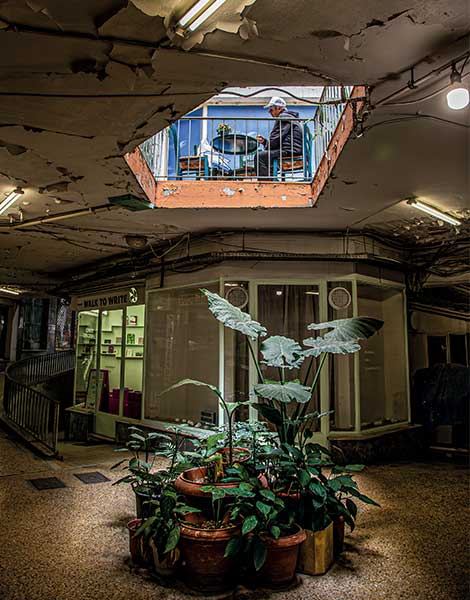
“In the arcades, time seems to stand still,” muses Natasha Pappa.
© Stelios Papardellas
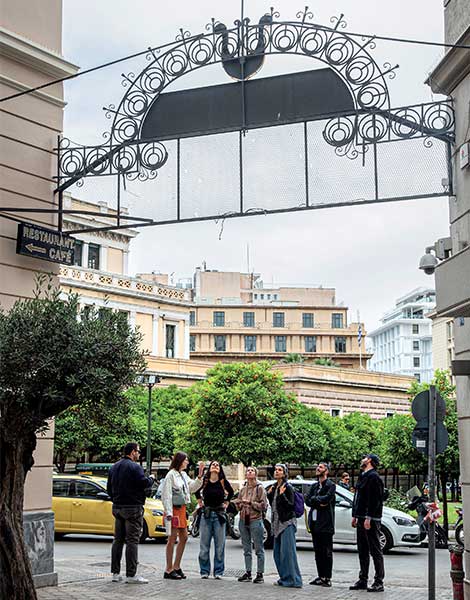
Natasha discusses the art nouveau sign at the entrance of Bolani Arcade.
© Stelios Papardellas
Natasha, who publishes independent city guidebooks and the urban magazine Desired Landscapes, is also a graphic designer, as evidenced by the small, stylish book she is holding. But mostly, she is an excellent guide with extensive knowledge of Athens. When she returned to Athens from the Netherlands, where she had lived for a few years, she started walking around the city “because I wanted to get to know the real Athens. And I always found a sense of peace in the city’s stoas (arcades; covered passageways that connect large parallel or intersecting streets). There, I discovered a time capsule of sorts, a city within the city that felt more authentic.” So she decided to map as many of the city’s arcades as she could, and in 2015, she published a minimalist guidebook with distinctive, finely designed street plans, charting 40 such passageways, revealing their secrets.
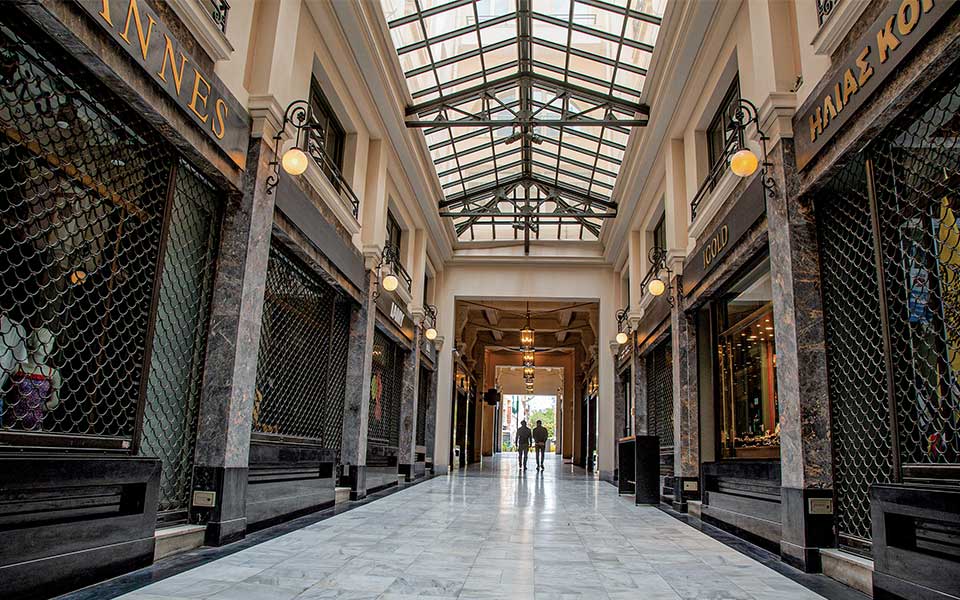
Built in 1936 by the famed Greek architect Alexandros Nikoloudis, and renovated in 2001, the Nikoloudis Arcade is one of Athens' hidden gems.
© Stelios Papardellas
Natasha points out the signs above us at the start of our tour. Looking up at the Stoa ton Emporon (Merchants’ Stoa) on Voulis Street, we see signs that read “Your neighborhood Delta,” “Propo,” “Assos,” and “Time for Cooper.” As childhood memories come flooding back, Natasha explains that the signs are part of an installation created several years ago by a team of designers. Unfortunately, despite this creative intervention, it has failed to revitalize the surrounding shops.
“In the arcades, time seems to stand still,” she says. I imagine how wonderful it would be if these quaint spaces could be turned into cafés or restaurants; they would come to life again. “Look, cafés and restaurants are all nice and good, but they eclipse the other shops,” counters Natasha. “Inevitably, arcades lose their original character even when these spaces are not taken over by chain stores.”
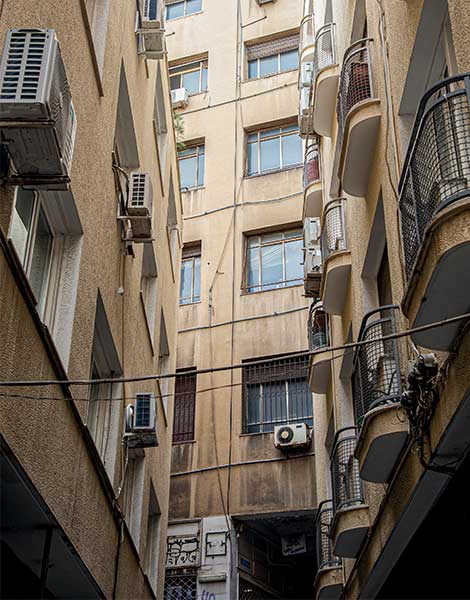
At the Merchants' Arcade, heading towards the charming Lekka Street.
© Stelios Papardellas
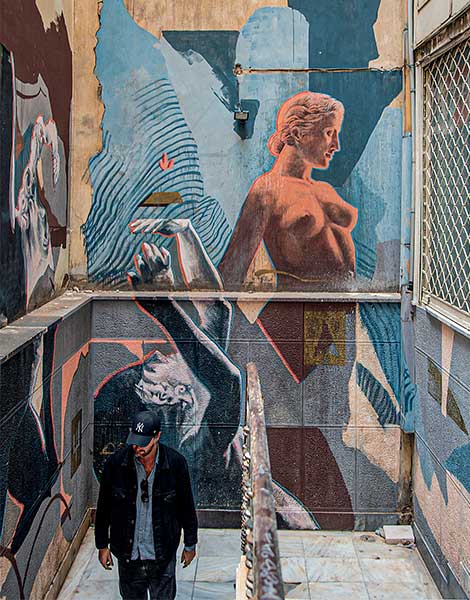
A touch of graffiti in the Merchants' Arcade.
© Stelios Papardellas
We walk through the streets around Syntagma Square, passing by Stoa Bolani, home of Aristokratikon pastry shop, famous for its chocolate pastries and golden ribbons, and Gouma, an old jewelry shop with a marble facade and a handmade gold doorknob. Natasha draws our attention to the facades of the arcade’s various small shops, which include printers, antique shops, and musical instrument shops. The hand-painted signs evoke feelings of nostalgia.
“You’ll have me wondering if there are arcades in Milan,” Francesko, an Italian tourist, says, smiling. Natasha offers an alternative experience that is off the beaten track, which appeals to foreigners who are not only interested in taking a double-decker bus from Syntagma Square to Piraeus or the beaches of the Athens Riviera. Guided tours like these have grown in popularity as Athens has emerged as a tourist destination in its own right, rather than as a one-day stopover on the way to the Cyclades.
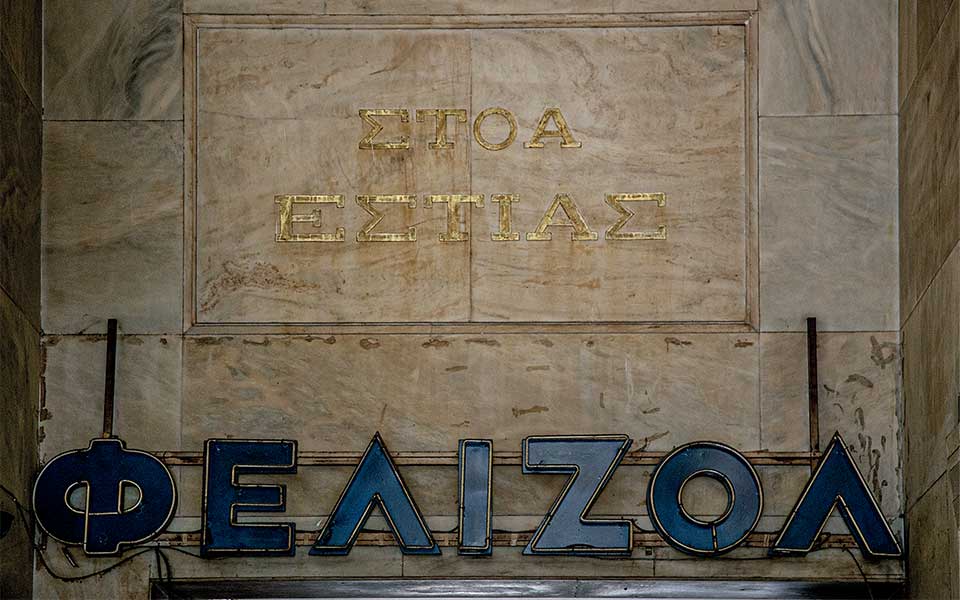
A characteristic sign in the Estia Arcade.
© Stelios Papardellas
Natasha points out that there is always a cool breeze blowing through the city’s arcades, offering pedestrians refuge on hot summer days. In previous years, Natasha began her tours earlier to avoid the hot afternoon sun. The draughty arcades are ideal for grabbing a cup of coffee, browsing shops, or exploring the lower ground floors. Seeing Athens’ center through its alleys and passageways allows you to escape the scorching sun and get to know the hidden and unassuming aspects of the city’s life.
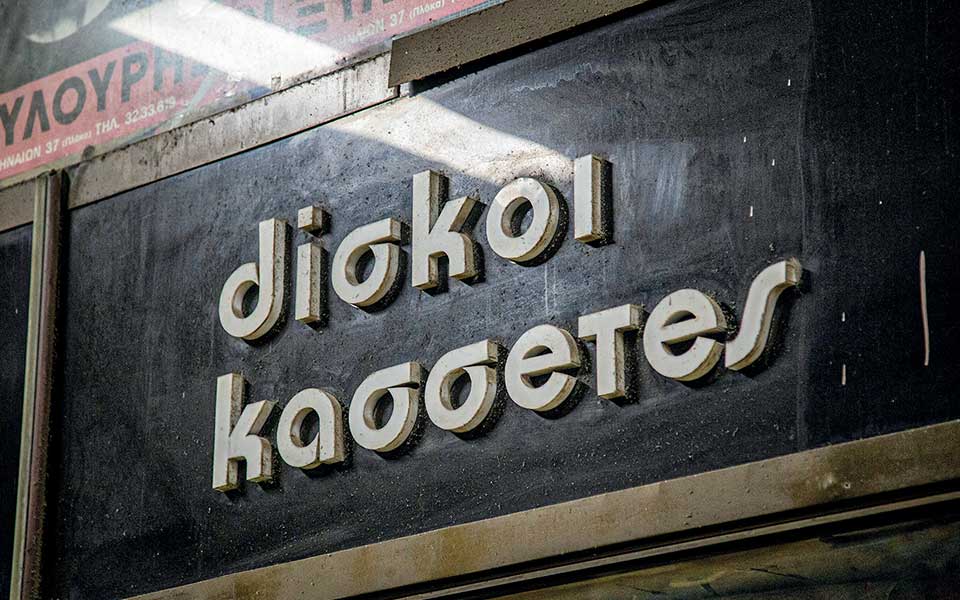
Nikos Xilouris' record store in Stoa Pesmazoglou first opened in 1978.
© Stelios Papardellas
We walk to Stoa Pesmazoglou and peek through the window of Nikos Xilouris’ record store, which has been open since 1978. In the atrium, we see a tree’s trunk and leafy branches. On the lower ground floor, we become lost in the maze of corridors and stumble upon its roots. “The lower you go, the more things you will discover,” Natasha says. “The history of the city’s arcades remains unexplored, unlike that of its neoclassical buildings, for example, which intrigue us because they take us back to a time when we thought we were the center of the world.”
From a distance, we notice an opening and catch a glimpse of the old National Library of Greece on Panepistimiou Street from an angle that had never seen before. We continue on to Stoa Orfanidou, which connects Stadiou and Sofokleous Streets. The owner of an antique shop exchanges a few words with Natasha. The shop is filled with unique objects: a ceramic statuette of the Virgin Mary, a Japanese figurine, silver decorative eggs, necklaces, and vintage posters. A 2000s-style “Welcome” sticker greets us as we enter. A few stores down, we pass by a window display with casual clothes. They say this is where jeans were sold when they first arrived in Greece. The surrounding shops are a collector’s paradise, with coins, stamps, and prints galore, and a few doors down, one can even have their future read.
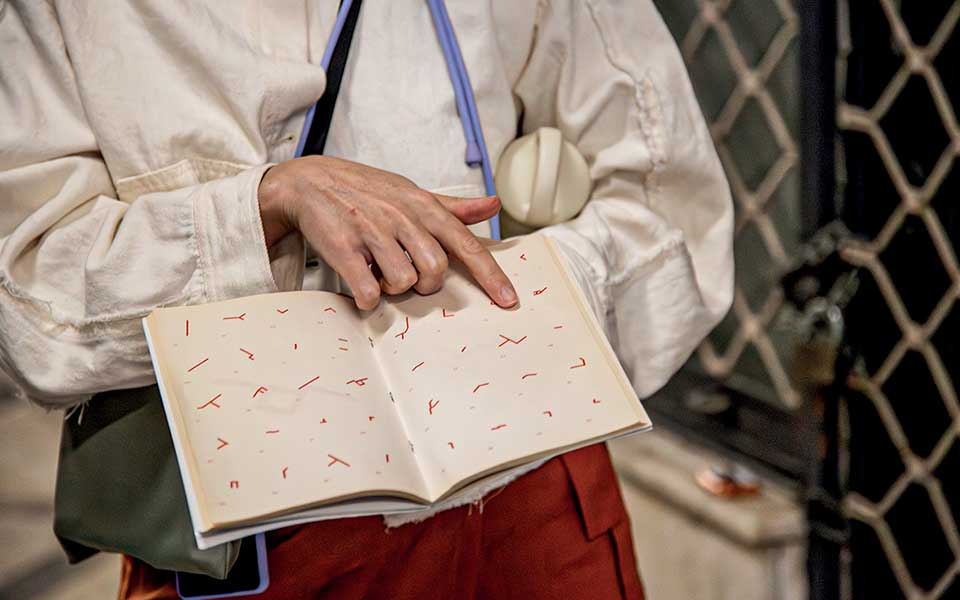
Natasha's minimalist guidebook to the arcades was published in 2015.
© Stelios Papardellas
Our last stop? Stoa Anatoli. In a small corner, among printers’ shops, is Desired Landscapes, Natasha’s pocket bookstore, where you can find guidebooks and posters of Athens, is located in a small corner among the printers’ shops. “This city was built by small businesses, by craftspeople and traders. After the COVID pandemic, there has been a trend for e-shops to become tiny physical stores like mine,” she says, showing me that she doesn’t even have a stock room. Excess stock is stored beneath a couch. Her shop stands out because of its vibrant purple color. “You look at it and wonder if the contrast fits the arcade. I decided to do it because the items I sell are similar to those found in the professional printers’ shops across from me.”
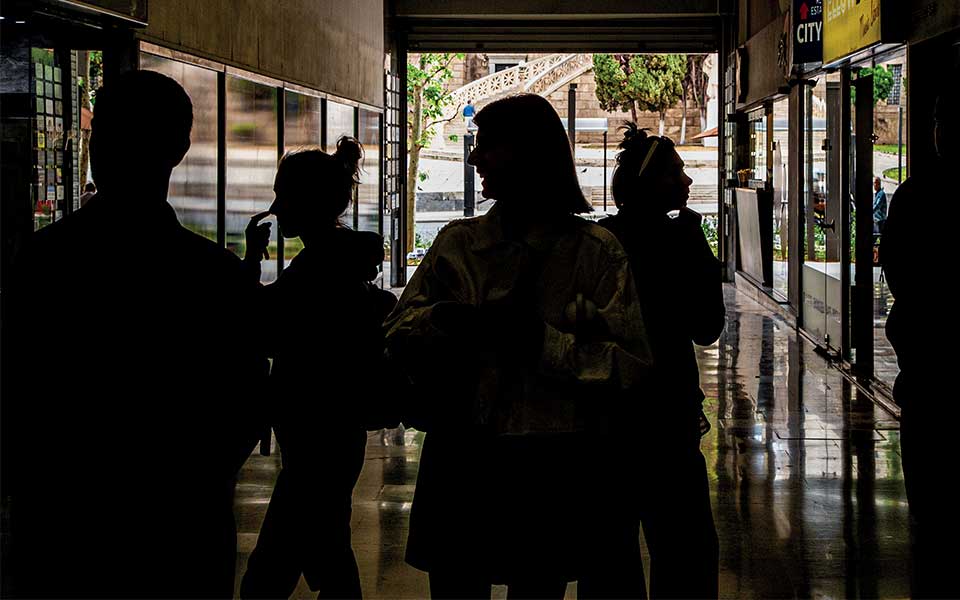
Amid the small shops of Pesmazoglou Arcade, with the National Library's staircase in the background.
© Stelios Papardellas
I say goodbye to Natasha and head to Skouleniou Street. I order a drink at a trendy café that serves brunch to well-dressed Athenians and sunburned tourists. It’s a very different world. Inevitably, I think about how diverse this city is and, more importantly, how critical it is to preserve the contrasts that define it.
To book a tour of Athens’ arcades, visit desired-landscapes.com
This article was previously published in Greek at kathimerini.gr.